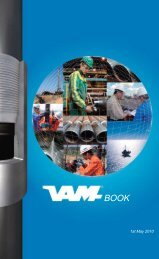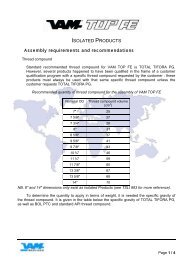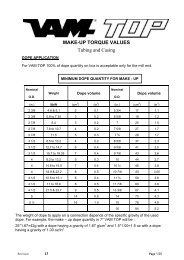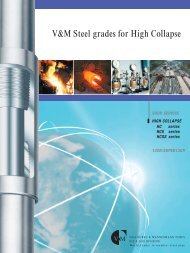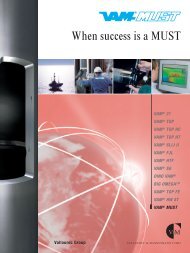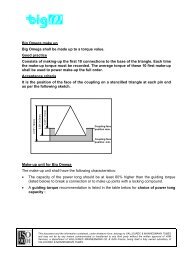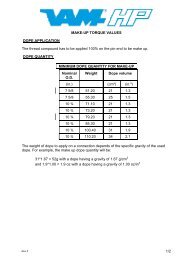Find the online-edition of Connection magazine - VAM Services
Find the online-edition of Connection magazine - VAM Services
Find the online-edition of Connection magazine - VAM Services
Create successful ePaper yourself
Turn your PDF publications into a flip-book with our unique Google optimized e-Paper software.
<strong>the</strong> tech files<br />
DEFINITION AND HISTORY<br />
There are several ways for managing downhole corrosion,<br />
from doing nothing to implement immune<br />
materials like CRA. For <strong>the</strong> end user, <strong>the</strong> main purpose<br />
<strong>of</strong> CRA tubing is not to resist corrosion but<br />
to find out <strong>the</strong> overall less expensive solution. In<br />
<strong>the</strong> oil and gas exploration, in many areas effluents<br />
<strong>of</strong> <strong>the</strong> wells are corrosive and <strong>the</strong> trend is on <strong>the</strong><br />
increase.<br />
The stainless steels appeared around 1870,<br />
and at <strong>the</strong> beginning <strong>the</strong>y were named “rustless”.<br />
#01<br />
CORROSION<br />
RESISTANT ALLOY<br />
for OCTG<br />
At a glance <strong>the</strong> OCTG Corrosion Resistant Alloy (CRA) market is a<br />
very small part: about 0.1% <strong>of</strong> <strong>the</strong> world wide stainless steel production.<br />
But this part is fundamental for <strong>the</strong> exploration and production<br />
<strong>of</strong> gas mainly in <strong>the</strong> more and more severe conditions.<br />
COMPOSITION<br />
Metallurgists consider steel as stainless if it contains<br />
a minimum 10.5% Chromium that creates a<br />
protective passive layer at <strong>the</strong> surface <strong>of</strong> <strong>the</strong> product<br />
against corrosion. Some elements like Molybdenum,<br />
Copper… can reinforce <strong>the</strong> corrosion resistance.<br />
Stainless steels are sorted by ISO 13680 and API<br />
5CRA in 4 classes related to <strong>the</strong>ir metallurgical<br />
structure: martensitic, ferritic, austenitic-ferritic<br />
(or duplex) and austenitic. Martensitic (mainly<br />
13%Cr and super 13%Cr) are hardened by appropriate<br />
heat treatment, but <strong>the</strong>ir use is limited to<br />
Pilgering process Drawing process<br />
.<br />
The first target was to avoid corrosion in <strong>the</strong> guns<br />
for weapons. Those rustless alloys <strong>the</strong>n demonstrated<br />
<strong>the</strong>ir advantages for many o<strong>the</strong>r usages like<br />
in chemical industry. The true development <strong>of</strong> stainless<br />
steels large mass production started in <strong>the</strong><br />
sixties with <strong>the</strong> steel melting and refining technologies<br />
such as AOD and VOD. In <strong>the</strong> seventies <strong>the</strong><br />
development <strong>of</strong> gas research and production in cor<br />
rosive wells leaded to develop specific OCTG<br />
grades.<br />
environment with low H2S partial pressures.<br />
Contrary to duplex and austenitic, ferritic alloys<br />
are not used in OCTG: <strong>the</strong>ir mechanical characteristics<br />
are very difficult to streng<strong>the</strong>n by cold hardening.<br />
Cold hardening (or also known as cold working or<br />
strain hardening) is <strong>the</strong> streng<strong>the</strong>ning <strong>of</strong> a metal<br />
by plastic deformation. Shaping <strong>the</strong> product at<br />
ambient temperature it allows reaching desired<br />
yield strength and final dimensions. It is <strong>the</strong> main<br />
process used for CRA.<br />
T H E V A L L O U R E C O I L & G A S M A G A Z I N E # 0 1 - J A N U A R Y 2 0 1 2 13<br />
/...




